
4 Ways To End A Chord Melody
Nov 06, 2019If you've ever tried to arrange your own chord melody, you'll know that finding a good final chord can be quite tricky.
This is because the vast majority of standards end on the root of the I chord. There simply aren't a lot of voicings that will work with this criteria! 😖
So, in this lesson we'll attempt to solve this problem by providing you with 4 strategies you can use when the melody ends on the root.
Before we begin, be sure to download this PDF with all the examples ⬇️
Click to download your "4 Ways To End A Chord Melody"
Join our Community here.
All the examples are on a ii-V-I in the key of C major, but as always I recommend transposing these to other keys!
1. Bury The Extensions
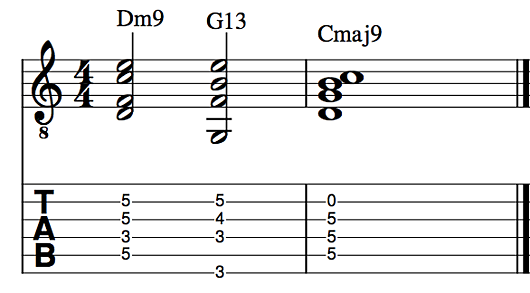
The first option you have is pretty straightforward - just tough it out and search for an interesting voicing with the root on top 💪
What this means practically is that you will have to "bury" those notes we love as jazz guitarists - 7ths, 9ths, etc - and put them in unconventional places.
Here, we've taken a Cmaj9 voicing and rearranged it so that the 9th is actually on the bottom, and the 7th is an open string. As you can see, this process can yield some voicings you might never have played!
2. Blues Substitutions
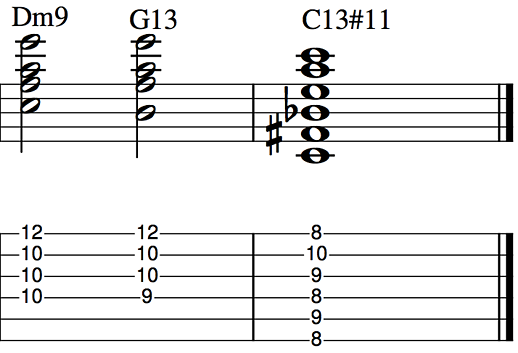
This one comes straight out of the Lenny Breau playbook - rather than playing a typical Maj7 Chord, we're going to play a type of C dominant 7 chord.
Why does this work? It's actually a concept called borrowed chords - you're allowed to use any chords from the parallel modes of C major. Some people also call this modal interchange.
In this case, we're borrowing the tonic chord from the mode of C Mixolydian. It gives us a really nice blues-y sound, while still remaining true to the melody.
3. Substitution with bVI
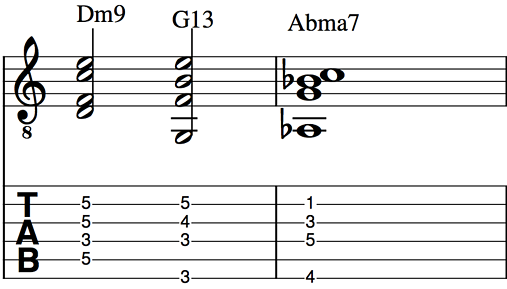

This is my personal favourite of the bunch! We're continuing the idea of borrowed chords. This Abmaj7 one comes from C Aeolian.
We refer to it as bVI Maj7 because that's the relationship to the key of C major. It works really well because the melody note (C) is the 3rd of the Abmaj7 chord.
Since we played the melody note, we're now free to resolve back to the key of C major however we like. I've just written in some pretty standard chords, but feel free to use your favourites!
Use this one sparingly, though... if you overuse it, it may lose its effect.
4. Substitution with bII
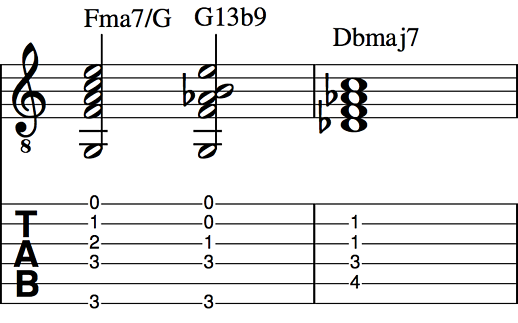
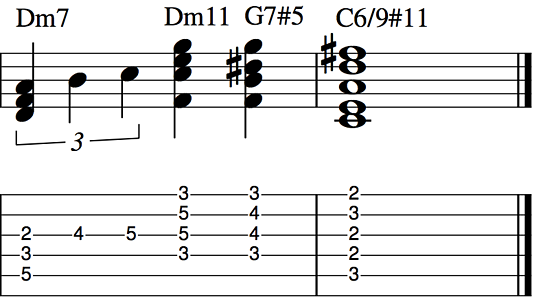
Lastly, the infamous bII substitution. This is another borrowed chord which comes from the C Phyrgian scale. Aren't you glad you learned your modes?!
It works because the melody note (C) is the 7th of the Dbmaj7 chord. After playing this chord you'd want to resolve back down to the regular key.
I've done this here via a ii-V-I, although it's totally valid to just skip the ii-V and just play any Cmaj7 or C6/9 chord right after the Dbmaj7.
Click to download your "4 Ways To End A Chord Melody"
Join our Community here.
Key Takeaways
Learning these examples is a great starting point. However, in the long term you really want to understand the underlying theory behind why these endings work.
Some food for thought:
- You can borrow any chord from the parallel modes of the key (ex. C Dorian, C Phrygian, C Lydian, etc.)
- The borrowed chords that sound the most stable are the ones that have the melody as one of their chord tones (ex. C is the 3rd of Abmaj7)
This can be confusing if you're just starting, so you may want to check out the theory resources here on the site, and grapple with this concept when you're ready.
Now, the real question... I can end a chord melody, but how do I end a blog post?? 😜









